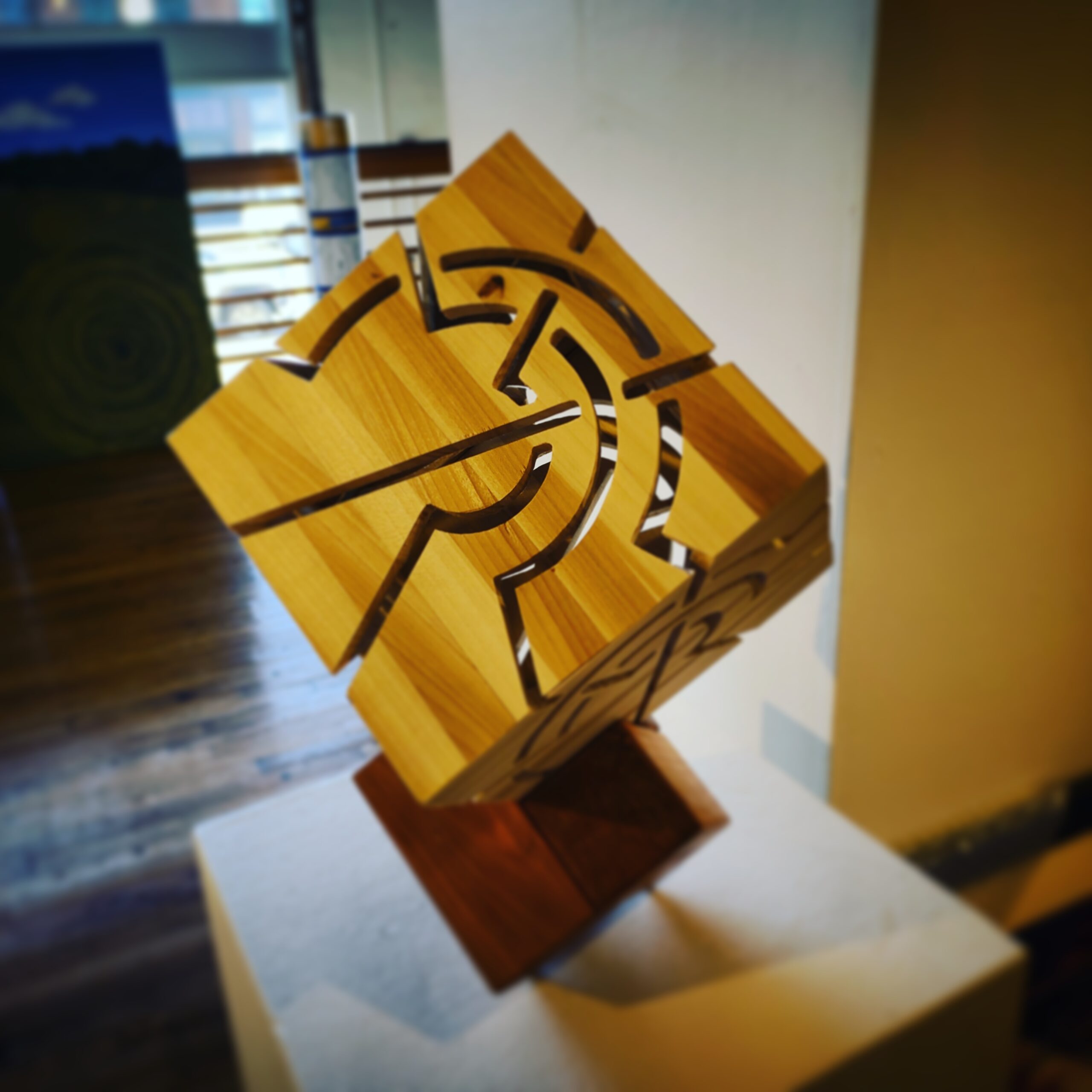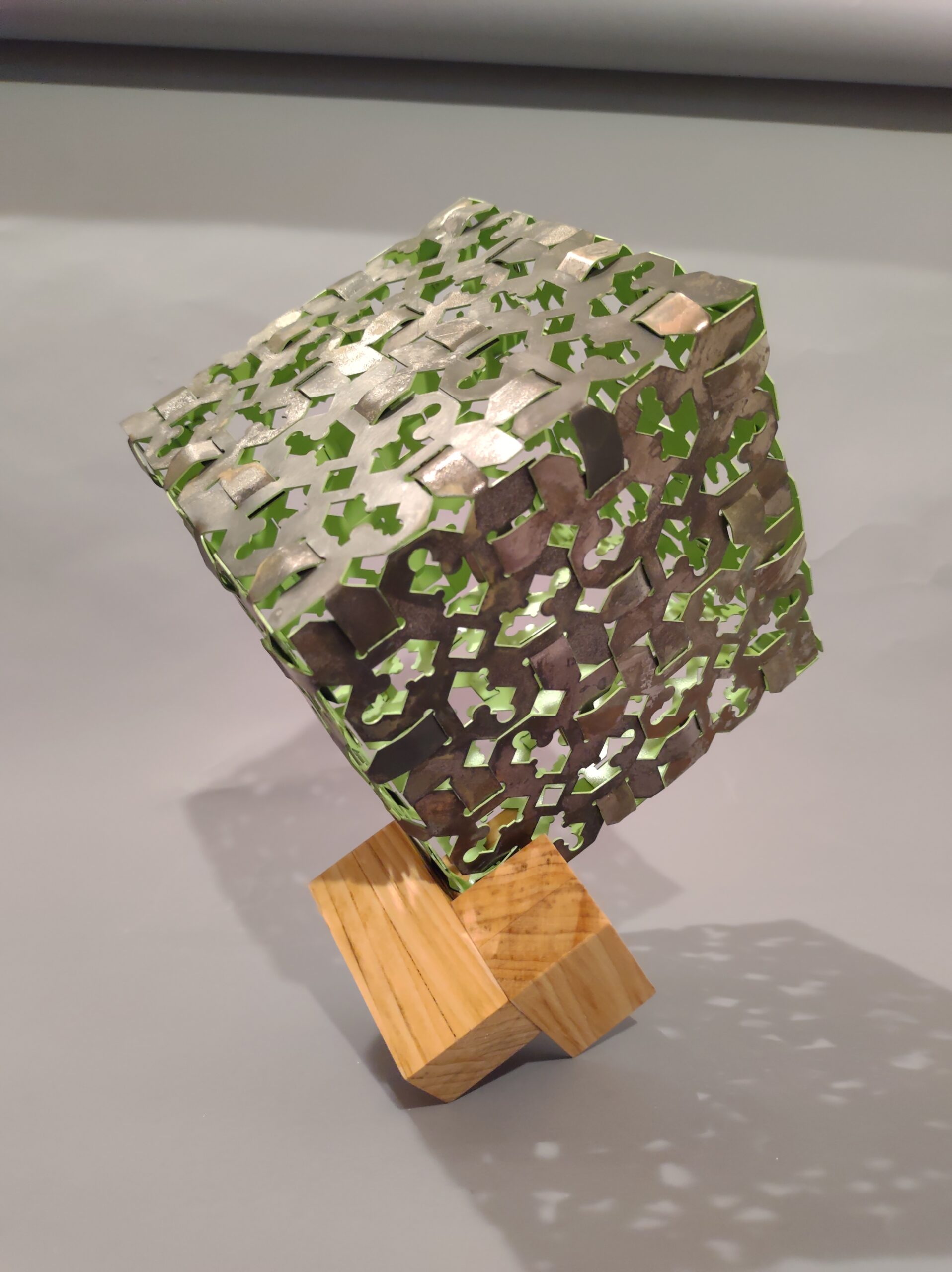This collection of artworks further explores the use of repeated, simple shapes and lines translated or rotated to create complexity in a knot design. Each piece is based on a component, shown on the respective artwork posts.
A variety of techniques and media were used to bring the designs to life. The shapes and symbols they create are purely geometry, with no hidden meaning beyond the beauty of intricacy.
All work in this collection was created for and displayed at the Schwarzbart Gallery during January of 2022.
-
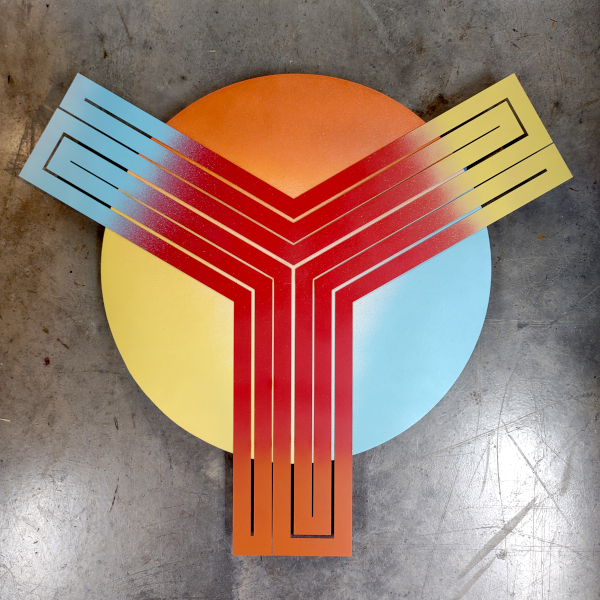
tri unknot
a loop, folded and bent to form a branching shape
-

tri unicursal knot
unicursal knot in inlaid copper on a walnut truncated tetrahedron
-
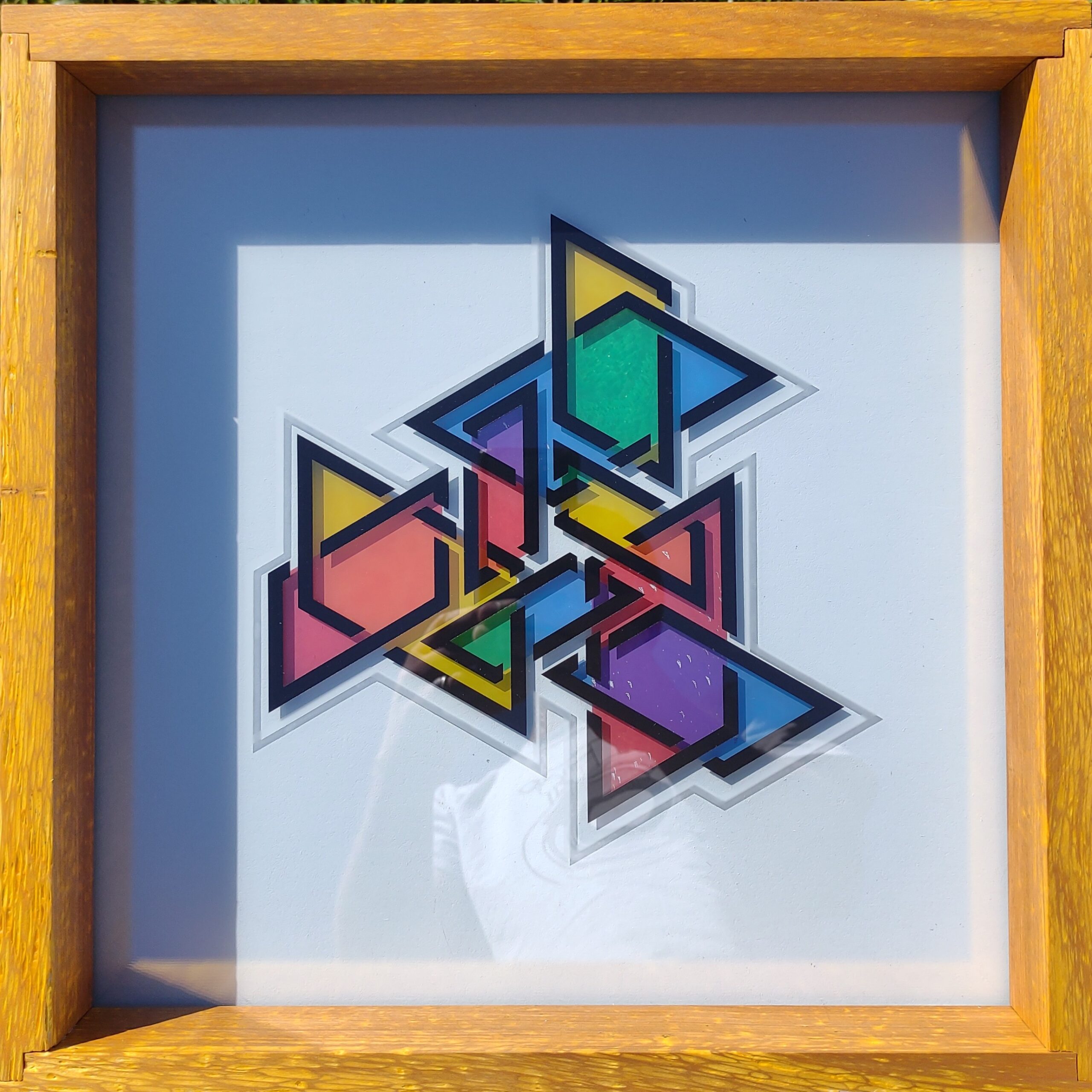
layered multi polygon knot
A group of three similar polygons rotate to form a knot. Multiple glass layers show colors, the knot itself, and a faint outline.
-
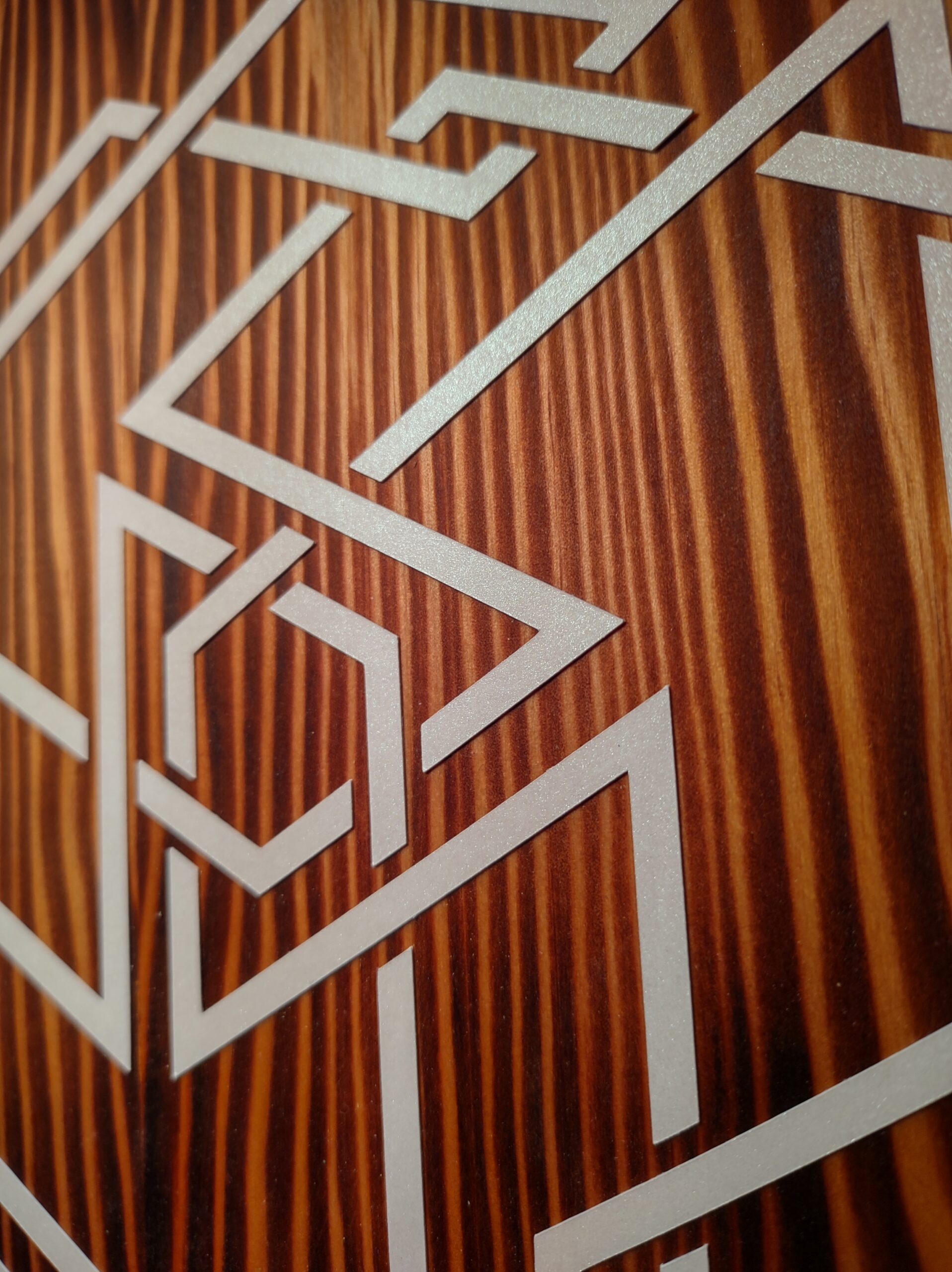
unicursal hex knot
two versions of a hexagon-based knot
-

tri angle polygonal knot
A parallelogram and a triangular line rotate to create an overall triangular shape.
-

lattice tile
an isolated tile from a larger pattern
-
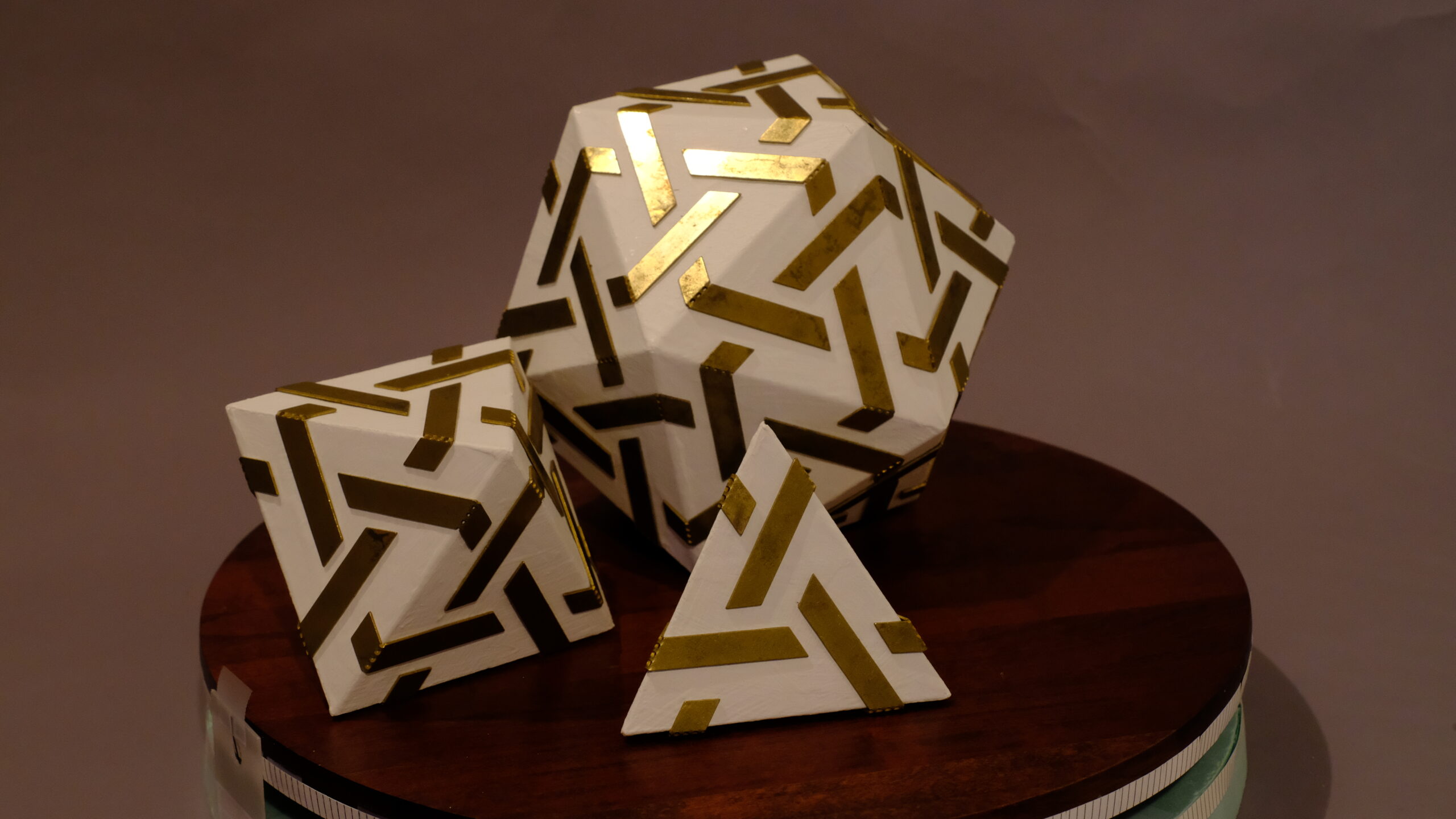
knot tiling triangle-faced polyhedra
A single shape tiles the faces of all three equilateral triangle-faced regular polyhedra with knots.

